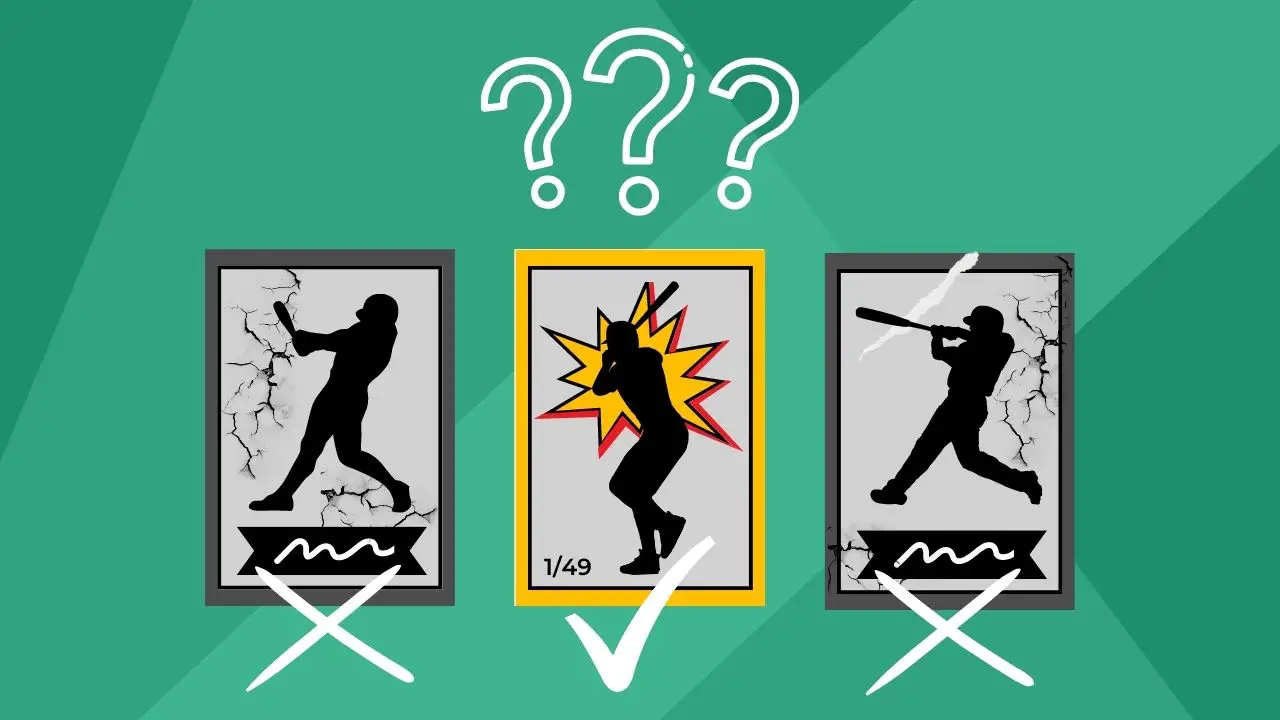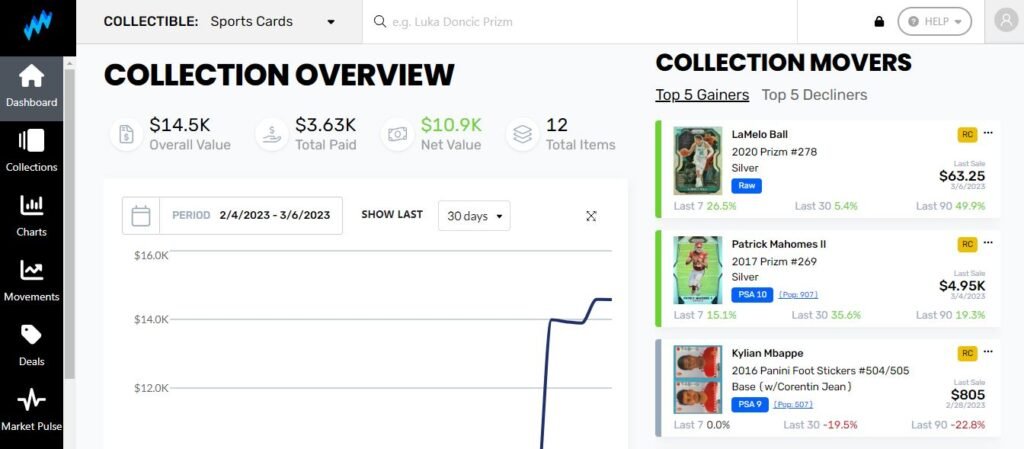
In most cases, grading raw cards certainly increases their value and authenticity, but it’s important to establish what factors determine whether a card is worth the time and expense of grading.
Grading cards is worth it in some cases, but not all.
Ultimately, if you’re grading a card to increase its value and sell, then it comes down to the time and money it’ll cost and the potential profit that will be made.
There are multiple factors to consider, which change based on different goals; I’ve covered everything you need to know below.
Table of Contents
Recommended Tool:
Market Movers
The hobby’s best app to track the latest card values, both graded and ungraded – Easily check the price history of cards with graphs and data, all in one place.
The Main Factors To Consider When Deciding Whether To Grade A Card
The first step is deciding which grading company to use, which is an important decision in itself. Higher reputation grading services, like PSA, will give a card more added value than a lesser-known service.
We’ve established that it’s important to know what to grade, but what are the factors to consider that help to know if a card is worth grading?
There are several things to look at, let’s take a look at them:
The Condition Of The Card
The first, and arguably most important, factor to consider is the condition of the card in itself.
Higher graded cards are more collectable and sought-after than lower graded cards, they’re rarer as well as being more appealing, which contributes to higher values.
A card with a very low grade, can actually be worth less than the same card ungraded, or at least less than the value of the raw card with the expense of grading added – That’s because a collector could buy it raw in the hope it will grade higher, whereas if it’s already been graded then there’s no potential for further added value.
We know that cards in pristine condition, that achieve the top grade, like a PSA 10 for example, will be worth far more than the same card in worse condition.
There’s usually a big jump in value between the same card that’s graded PSA 9 compared to PSA 10, and the value drops further with each lower grade.
A good, extreme example of that is Derek Jeter’s 1993 SP Foil #279 card:


Grading a raw card that will come back as a grade 8 or higher is likely to give a good or decent return on the expense paid to get it graded, but as you start getting lower grades, the profits start minimizing or go into losses.
That scale does change with old vintage cards, because a grade like a PSA 6 for those cards is something to celebrate, and will hold good value – that’s because they’ll likely be little to none that are graded higher.
So, it’s important to evaluate the condition of the card before submitting it.
You can even get a pre-grade, which will give an indication of what grade the card would likely receive if it was submitted to one of the grading services.
You can also use your own experience, which will build up once you’ve been through the process multiple times and been around cards long enough.
There are 4 areas that grading companies generally consider when evaluation card condition:
- Surface
- Corners
- Edges
- Centering

Properly preparing and cleaning a card before submitting can help it achieve a better grade.
Once you get an indication of the potential grade, you can check the current value of the card in that grade, and the grade above and below, and decide whether it’s worth it.
The Rarity And Scarcity Of The Card
Mainstream releases, with high print-runs, are more risky to grade – That’s because the supply of each grade in that card could keep increasing after new submissions.
If there’s an abundance of PSA 10s for a particular card, which keeps increasing, the value will drop, which will have a knock-on effect for the lower grades.
Rare and hard-to-find cards are more valuable, and have the potential to increase in value over time, especially if there’s no potential for an increase in graded supply.
If you’re grading a card to sell for profit after, mainstream and common cards are generally not worth submitting.
A few examples of cards that are worth grading are:

The Popularity And Demand Of The Card
The popularity and demand for a card can also influence whether it’s worth grading.
Think about the reasons that a particular card is valued at its current price – If a short term event causes a spike in demand, which pushes values up, that might not sustain at that level.
You have to be prepared for the grading process to take weeks or months to complete, so consider whether prices will remain at current levels in the meantime.
If a card is valued high because it features a popular player who’s a legend of their sport, for example, the value is likely to sustain or increase in the time it takes to grade, whereas a player who’s had a good few weeks, and has seen a surge in card prices due to short term hype, might not sustain those card values for long enough for you to receive your graded card back, and sell it.
The Best Tools To Help Determine Whether To Grade A Card
Market Movers
Market Movers allows you to track your collection all in one place; Of all the tools that I’ve tried for tracking my collection, it’s the best one.
You can search specific cards, either ungraded or in specific grades, and see graphs and tables with pricing history from multiple top auction sites, like eBay for example.
It’s a helpful app to help decide which cards to get graded, because you can check prices of your cards over time, in the potential grades they’ll achieve, and see the current trends and popularity of cards.
Population Reports
Many of the top grading companies have a free population report resource, which allows you to check specific cards and see how many of them have been graded (by that grading service), and which grade was awarded.
Both BGS and PSA have population reports on their website – I would recommend checking both to see how much graded supply there is for the card you’re considering submitting for grading.
Cards that have high levels of supply, particularly in the highest grades, will generally be worth less.
Final Thoughts
In conclusion, grading a card can increase its value and provide assurance of its authenticity and condition.
However, it’s important to carefully consider the factors listed above that help to know if a card is worth grading.
While there are advantages and disadvantages to grading, it can be a worthwhile investment for collectors who have rare, valuable, or high-demand cards in their collections.
By choosing a reputable grading service and familiarizing yourself with their grading system, you can start to predict grades based on experience.


